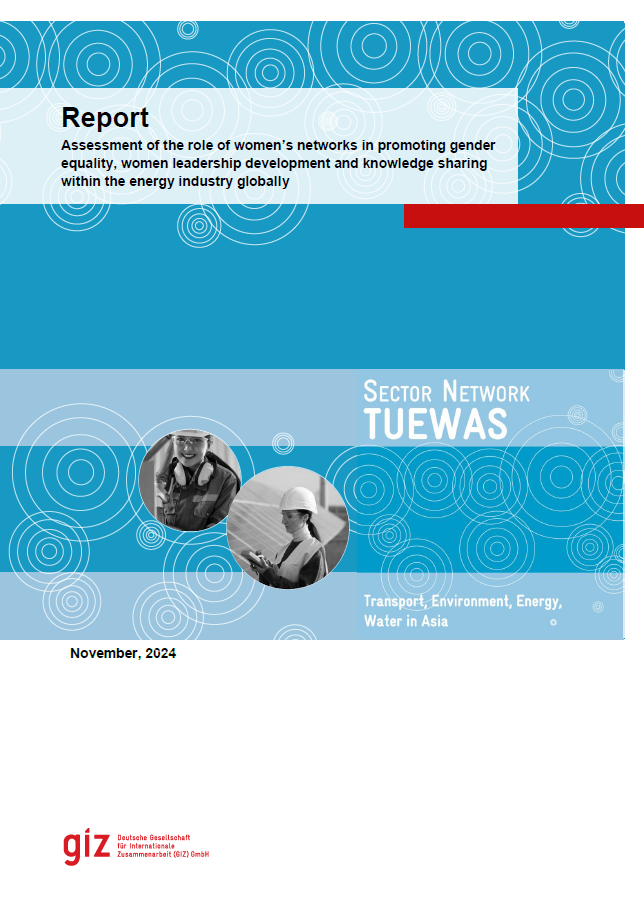Assessment of the role of women's networks in promoting gender equality, women leadership development and knowledge sharing within the energy industry globally
 |
rapport Nov 2024 ; 49 pages
Aut. Thi Thu Phuong Tran
Ed. GIZ - Eschborn
Téléchargeable sous format: PdF
Abstract:
There is a strong consensus in academia and practice that women’s networks play an important role in their members‘ career advancement, skill development, and the overall representation of women in decision-making po-sitions (Allison et al., 2019; Clancy & Feenstra, 2019; Waberg, 2016). However, there is a lack of studies on women’s networks in the energy sector and their effectiveness in factors such as establishment, development, and maintenance. Thus, more practical insights from a variety of views (covering from network members to board members) on the goals and expected outcomes of women's networks are needed.
This Study focus on development journeys of women’s networks in the energy in-dustry to identify and describe best practices, recommendations for community leaders and stakeholders in establishing, developing, and maintaining women’s networks that can make positive changes to address gender inequalities and foster just energy transition. Contents:
EXECUTIVE SUMMARY p. 6
CHAPTER 1: INTRODUCTION p.10
1.1. About the Study p.10
1.2. Structure of the Research Report p. 10
1.3. Disclaimer p. 10
CHAPTER 2: CONTEXT AND OBJECTIVES p.12
2.1. Context of the Study p.12
2.1.1. Gender and just energy transition p.12
2.1.2. Women‘s networks in the energy industry p.13
2.1.3. Previous studies on women‘s networks p.14
2.2. Objectives of the Study p.14
CHAPTER 3: SCOPE OF RESEARCH AND METHODOLOGIES p.16
3.1. Scope of the Study p.16
3.1.1. Women‘s networks and the role of women‘s networks in promoting gender equality, women leadership development, and knowledge sharing within the energy sector p.16
3.1.2. Initial model to assess the role of energy women networks p.19
3.2. Methodologies of the Study p.20
3.2.1. Research approach, design and data collection p.20
3.2.2. Sample selection p.22
3.2.3. Data analysis p.25
CHAPTER 4: FINDINGS AND DISCUSSION p.27
4.1. Motivations ..................................................................................................................................................... 27
4.1.1. Social motivations p.27
4.1.2. Career motivations p.28
4.2. Effectiveness factors p.28
4.2.1. Vision, mission, and goals p.28
4.2.2. Network structure and HR audit p.30
4.2.3. Sponsorship (Finance) p.32
4.2.4. Membership p.33
4.2.5. Women Positions p.33
4.2.6. Events and other activities p.34
4.2.7. Reputation p.35
4.2.8. Diversity p.36
4.2.9. Partnership p.36
4.2.10. Policy p.37
CHAPTER 5: CONCLUSION AND RECOMMENDATIONS p.40
5.1. Conclusion p.40
5.2. Recommendations for activities outreach and impacts improvement p.42
CHAPTER 6: LIMITATIONS p.46
REFERENCES p.47
Mot clef: |
Editeur/Diffuseur: |
|
GIZ
-
Deutsche Gesellschaft für Internationale Zusammenarbeit - Eschborn - Allemagne |
En cas de lien brisé, nous le mentionner à communication@pseau.org